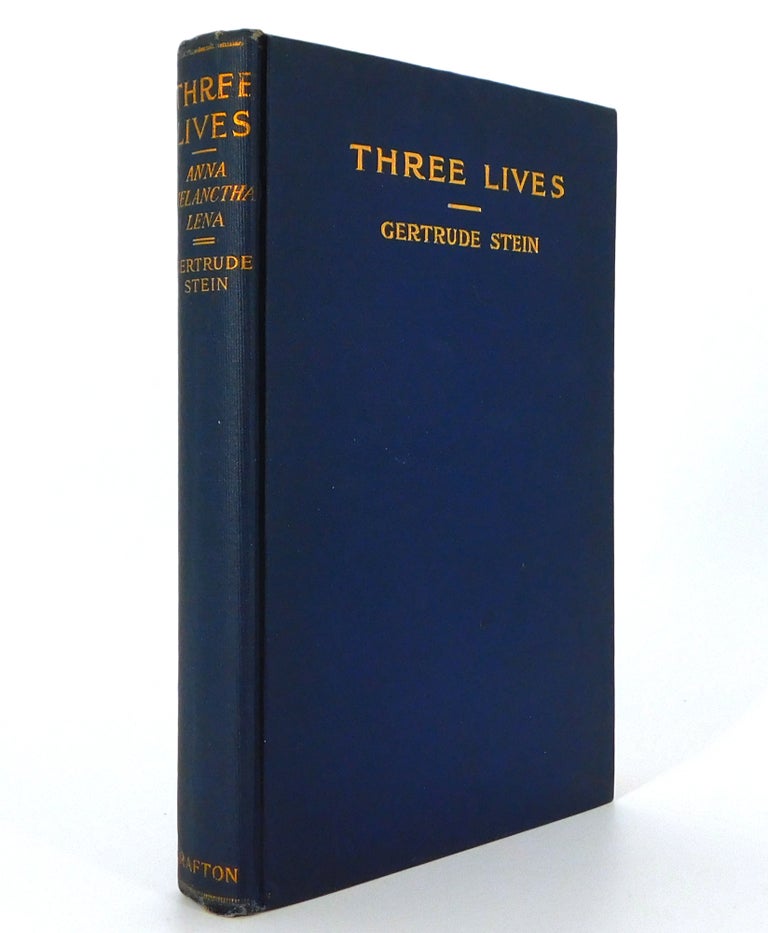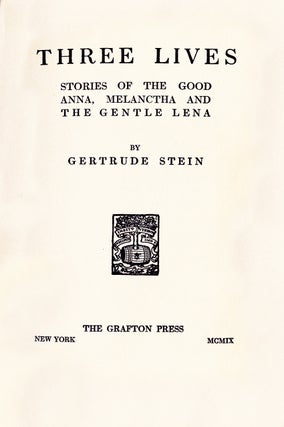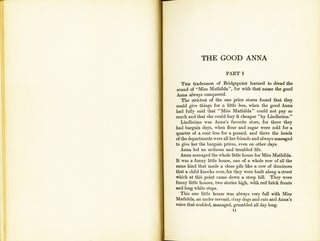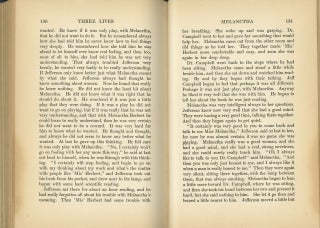Three Lives; Stories of the Good Anna, Melanctha and the Gentle Lena
New York: The Grafton Press, 1909. First Edition, First Printing. 8vo, 7 3/16 x 5 in. (185 x 125 mm); pp. 279 on cream stock, trimmed. Original dark blue vertically-ribbed cloth, gilt titling on front cover and spine, splitting to rear pastedown and hinge, not affecting rear joint which is fully intact. Neat ownership inscription from 1919 along top of front pastedown and ffep. One of 1000 copies.
[Sawyer p.37; Firmage 1; Wilson A1].
This is the first edition, first printing of Gertrude Stein's (1874-1946) first published book and is from the first issue of 700 copies, with a further 300 copies exported to Britain and distributed with an altered tipped in title page in 1915.
The three stories are independent of each other, but all are set in Bridgepoint (based on Baltimore) and each tells the story of a working-class woman. The themes range from female bonding, to race, to gender and sexuality. Its style is unconventional for its time and influenced by French literature, but it is considered Stein's formally most accessible work and it is the most widely taught of Stein's books.
Stein attributed the inception of Three Lives to the inspiration she received from a portrait Cézanne had painted of his wife and which was in the Stein collection. She credited this as a revelatory moment in the evolution of her writing style. Stein described: «that the stylistic method of (Three Lives) had been influenced by the Cézanne portrait under which she sat writing. The portrait of Madame Cézanne is one of the monumental examples of the artist's method, each exacting, carefully negotiated plane—from the suave reds of the armchair and the gray blues of the sitter's jacket to the vaguely figured wallpaper of the background—having been structured into existence, seeming to fix the subject for all eternity. So it was with Gertrude's repetitive sentences, each one building up, phrase by phrase, the substance of her character.» (James R. Mellow, "The Stein Salon Was the First Museum of Modern Art," The New York Times, December 1, 1968).
Condition: Near Fine.
Item number: 354
Price: $1,200.00
Share:



